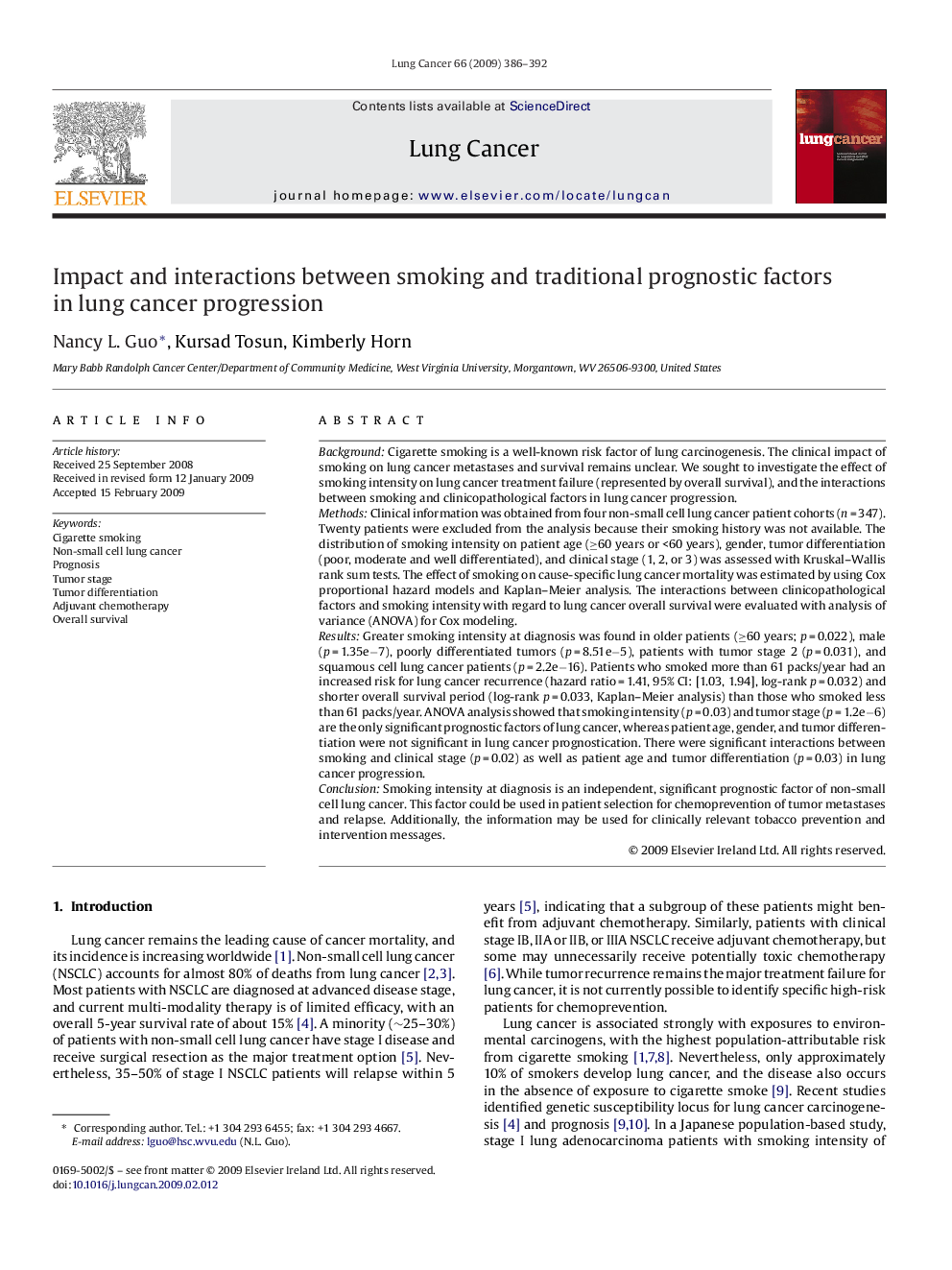| کد مقاله | کد نشریه | سال انتشار | مقاله انگلیسی | نسخه تمام متن |
|---|---|---|---|---|
| 2143029 | 1088331 | 2009 | 7 صفحه PDF | دانلود رایگان |

BackgroundCigarette smoking is a well-known risk factor of lung carcinogenesis. The clinical impact of smoking on lung cancer metastases and survival remains unclear. We sought to investigate the effect of smoking intensity on lung cancer treatment failure (represented by overall survival), and the interactions between smoking and clinicopathological factors in lung cancer progression.MethodsClinical information was obtained from four non-small cell lung cancer patient cohorts (n = 347). Twenty patients were excluded from the analysis because their smoking history was not available. The distribution of smoking intensity on patient age (≥60 years or <60 years), gender, tumor differentiation (poor, moderate and well differentiated), and clinical stage (1, 2, or 3) was assessed with Kruskal–Wallis rank sum tests. The effect of smoking on cause-specific lung cancer mortality was estimated by using Cox proportional hazard models and Kaplan–Meier analysis. The interactions between clinicopathological factors and smoking intensity with regard to lung cancer overall survival were evaluated with analysis of variance (ANOVA) for Cox modeling.ResultsGreater smoking intensity at diagnosis was found in older patients (≥60 years; p = 0.022), male (p = 1.35e−7), poorly differentiated tumors (p = 8.51e−5), patients with tumor stage 2 (p = 0.031), and squamous cell lung cancer patients (p = 2.2e−16). Patients who smoked more than 61 packs/year had an increased risk for lung cancer recurrence (hazard ratio = 1.41, 95% CI: [1.03, 1.94], log-rank p = 0.032) and shorter overall survival period (log-rank p = 0.033, Kaplan–Meier analysis) than those who smoked less than 61 packs/year. ANOVA analysis showed that smoking intensity (p = 0.03) and tumor stage (p = 1.2e−6) are the only significant prognostic factors of lung cancer, whereas patient age, gender, and tumor differentiation were not significant in lung cancer prognostication. There were significant interactions between smoking and clinical stage (p = 0.02) as well as patient age and tumor differentiation (p = 0.03) in lung cancer progression.ConclusionSmoking intensity at diagnosis is an independent, significant prognostic factor of non-small cell lung cancer. This factor could be used in patient selection for chemoprevention of tumor metastases and relapse. Additionally, the information may be used for clinically relevant tobacco prevention and intervention messages.
Journal: Lung Cancer - Volume 66, Issue 3, December 2009, Pages 386–392